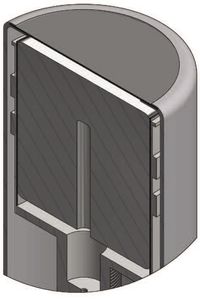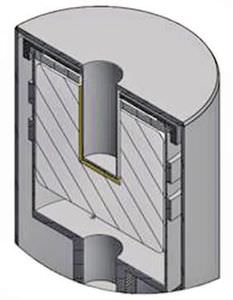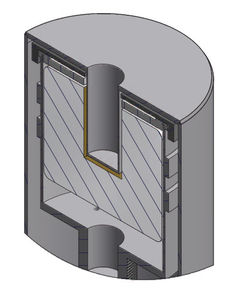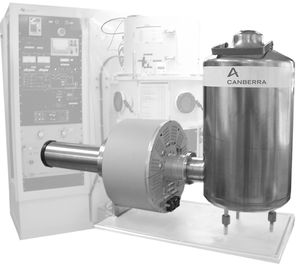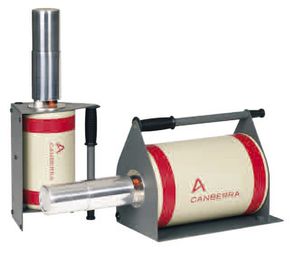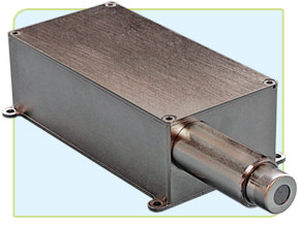
Gamma detector SEGeX-ray
Add to favorites
Compare this product
Characteristics
- Detected entity
- gamma, X-ray
Description
• Energy range from 40 keV to >10 MeV
• High resolution - good peak shape
• Excellent timing resolution
• High energy rate capability
• Equipped with Intelligent Preamplifier
• Diode FET protection
• Warm-up/HV shutdown
• USB 2.0 Serial Interface
The conventional coaxial germanium detector is often referred to as Pure Ge, HPGe, Intrinsic Ge, or Hyperpure Ge. Regardless of the superlative used, the detector is basically a cylinder of germanium with an n-type contact on the outer surface, and a p-type contact on the surface of an axial well. The germanium has a net impurity level of around 1010 atoms/cc so that with moderate reverse bias, the entire volume between the electrodes is depleted, and an electric field extends across this active region. Photon interaction within this region produces charge carriers which are swept by the electric field to their collecting electrodes, where a charge sensitive preamplifier converts this charge into a voltage pulse proportional to the energy deposited in the detector.
The n and p contacts, or electrodes, are typically diffused lithium and implanted boron respectively. The outer n-type diffused lithium contact is about 0.5 mm thick. The inner contact is about 0.3 µm thick. A surface barrier may be substituted for the implanted boron with equal results.
Catalogs
No catalogs are available for this product.
See all of Canberra Industries‘s catalogsRelated Searches
*Prices are pre-tax. They exclude delivery charges and customs duties and do not include additional charges for installation or activation options. Prices are indicative only and may vary by country, with changes to the cost of raw materials and exchange rates.



